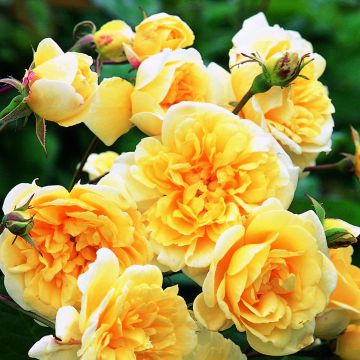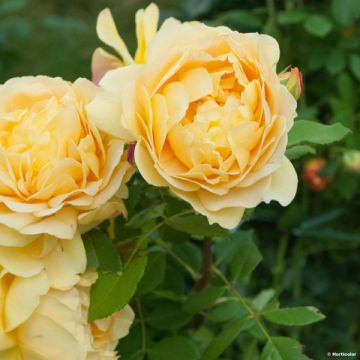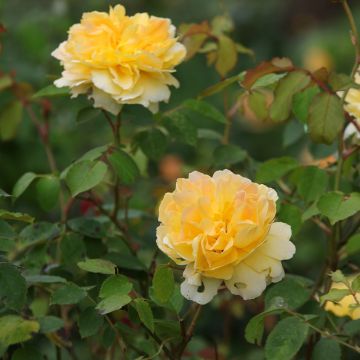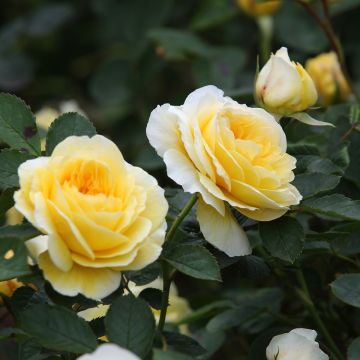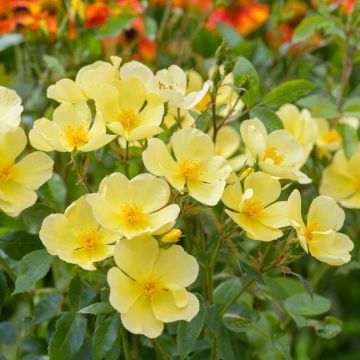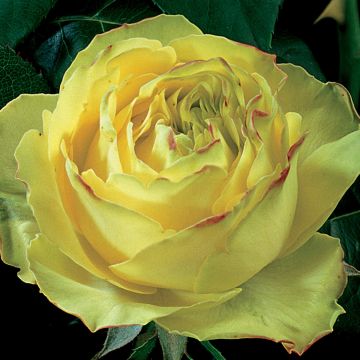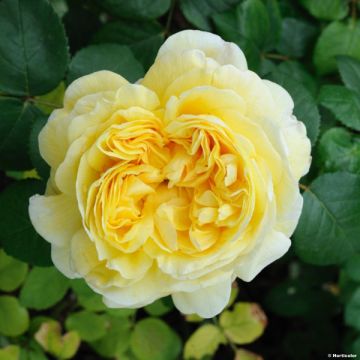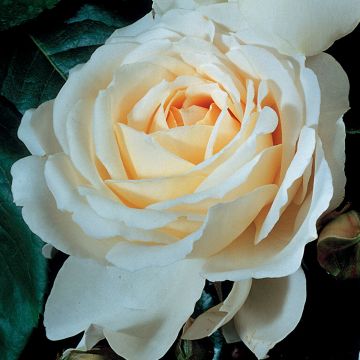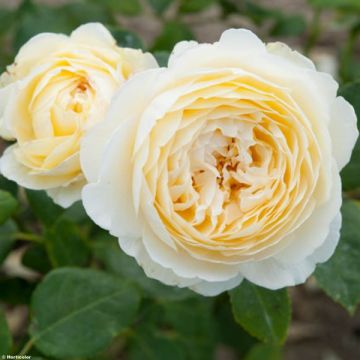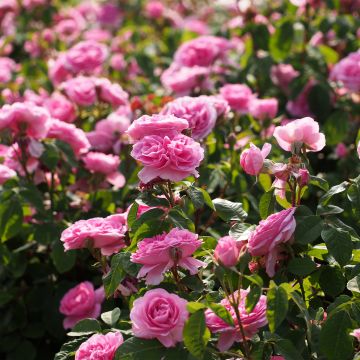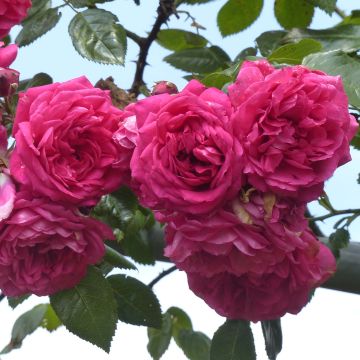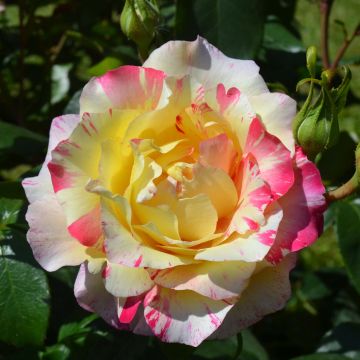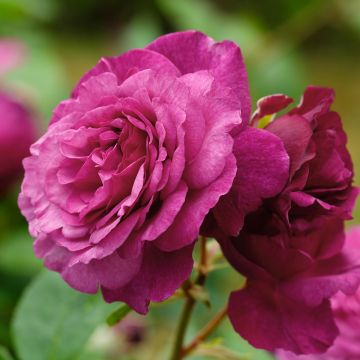

Rosa Teasing Georgia - English Climbing Rose


Rosa Teasing Georgia - English Climbing Rose
Rosa Teasing Georgia - English Climbing Rose
Rosa Teasing Georgia® 'Ausbaker'
Why not try an alternative variety in stock?
View all →This plant carries a 24 months recovery warranty
More information
We guarantee the quality of our plants for a full growing cycle, and will replace at our expense any plant that fails to recover under normal climatic and planting conditions.
From €5.90 for pickup delivery and €6.90 for home delivery
Express home delivery from €8.90.
From €5.90 for pickup delivery and €6.90 for home delivery
Express home delivery from €8.90.
Delivery to Corse prohibited: UE law prohibits the import of this plant from mainland France to Corse as part of the fight against Xylella fastidiosa. Please accept our sincere apologies.
More information


Does this plant fit my garden?
Set up your Plantfit profile →
Description
The flowers of this English Rose Teasing Georgia are of delicate beauty. They are double, with deep yellow central petals which lighten to pale lemon yellow on the outer edges. They have a pleasant tea rose fragrance. In summary, it is a robust bush, among the most reliable, very resistant to diseases, and a good perennial.
This bush belongs to the Leander Group, bringing together the most reliable varieties created by David Austin. It forms a medium-sized shrub with a bushy habit, 1.25 m (4ft) tall and 1 m (3ft) wide. Its thorny stems bear leaves composed of dark green leaflets. It blooms regularly, from June to October. It has been awarded the Fragrance Prize by the Royal National Rose Society in England. The roses, ranging from intense yellow to very pale yellow, emit a medium to strong scent, characteristic of tea rose.
With its sun-kissed roses, this Teasing Georgia rose bush can be accompanied by perennial plants and a range of colours of your choice. Whether one appreciates yellow in the garden or not, this bush is ideal for brightening, warming, or livening up a somewhat sad corner. In regions where the summer sun is intense and the light is harsh, the yellow of its flowers, of rare elegance, harmonises wonderfully with red flowers. It can enliven a mass of white or pale blue flowers. If you have enough space, English, Old, or Bush Roses are magnificent when planted in groups of three. They will grow together to form 'a single' opulent bush that will flower even more generously.
Obtained by David Austin in 1998.
Report an error about the product description
Rosa Teasing Georgia - English Climbing Rose in pictures


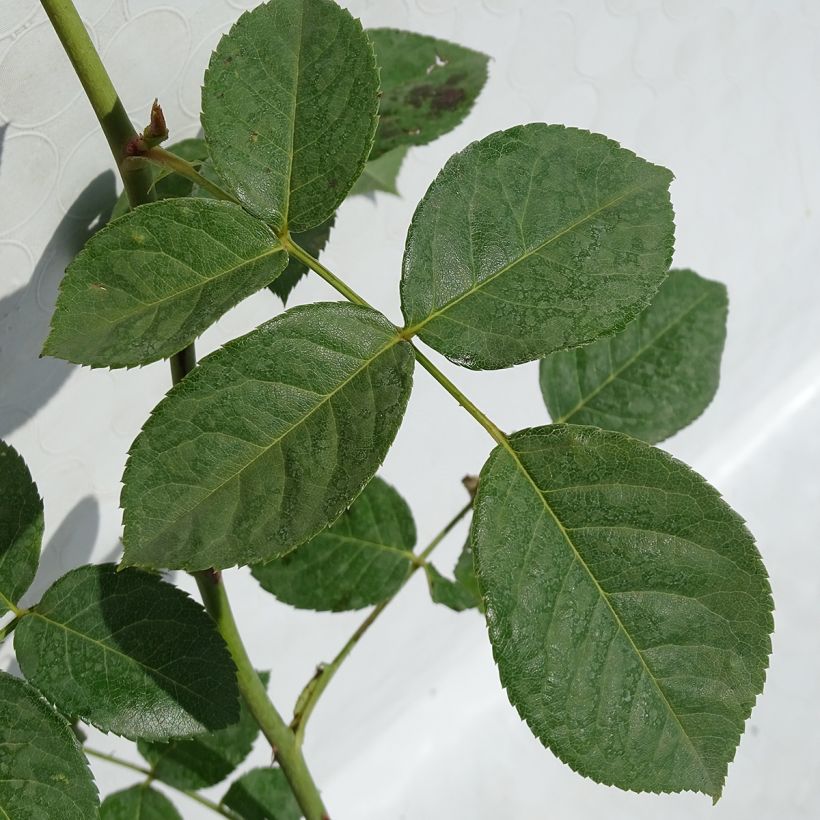

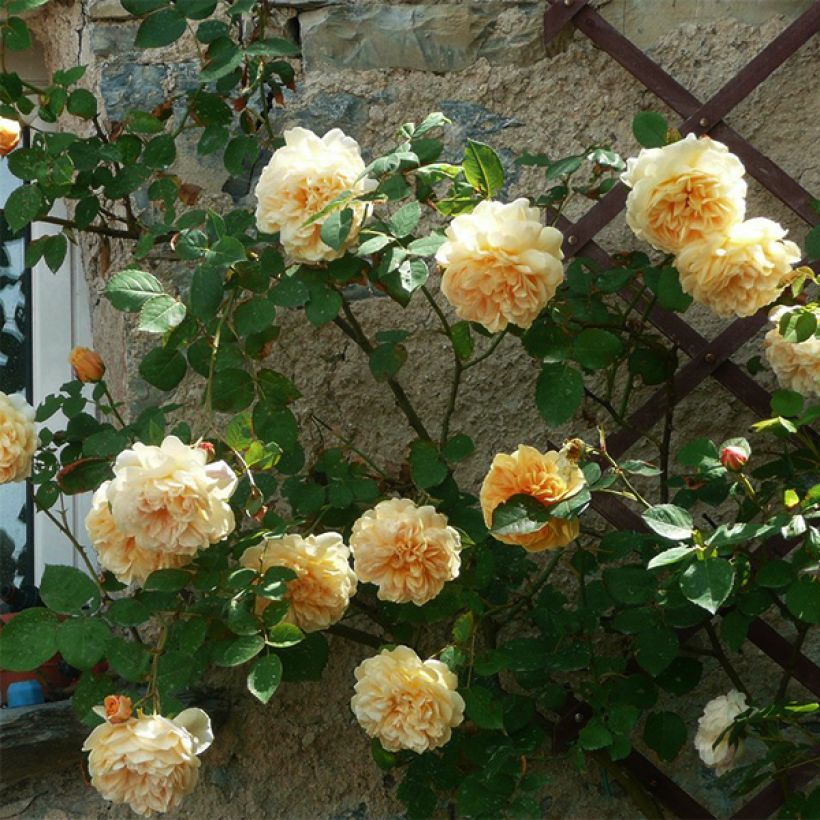

Plant habit
Flowering
Foliage
Botanical data
Rosa
Teasing Georgia® 'Ausbaker'
Rosaceae
Cultivar or hybrid
Rosa canina Laxa (Wrapped bare root, 4L/5L pot)
Other David Austin Roses
Planting and care
Plant your English Rose Teasing Georgia in a sunny or lightly shaded location. English roses are tolerant but they won't appreciate excessive limestone. They will adapt to any garden as long as the soil is well worked and rich enough.
To plant your rose, prepare the soil by crumbling it and adding an amendment, such as bonemeal, at the bottom of the planting hole. Water abundantly after planting to remove air pockets. Water regularly for a few weeks to encourage root growth. Pruning English roses is essential for flowering. At the end of winter, shorten the branches to 3-5 buds above the ground (at the lowest level), choosing an outward-facing bud for a more elegant habit. Take advantage of this pruning to remove dead wood and unsightly branches. Pruning is done at an angle above a bud. As the flowers bloom, remove faded flowers to stimulate the development of other buds.
Roses are often spotted or unsightly in late summer, but it is not a problem for their development. These spots are not harmful to the rose; it is a natural phenomenon.
Planting period
Intended location
Care
-
, onOrder confirmed
Reply from on Promesse de fleurs
Fragrant Roses
Haven't found what you were looking for?
Hardiness is the lowest winter temperature a plant can endure without suffering serious damage or even dying. However, hardiness is affected by location (a sheltered area, such as a patio), protection (winter cover) and soil type (hardiness is improved by well-drained soil).

Photo Sharing Terms & Conditions
In order to encourage gardeners to interact and share their experiences, Promesse de fleurs offers various media enabling content to be uploaded onto its Site - in particular via the ‘Photo sharing’ module.
The User agrees to refrain from:
- Posting any content that is illegal, prejudicial, insulting, racist, inciteful to hatred, revisionist, contrary to public decency, that infringes on privacy or on the privacy rights of third parties, in particular the publicity rights of persons and goods, intellectual property rights, or the right to privacy.
- Submitting content on behalf of a third party;
- Impersonate the identity of a third party and/or publish any personal information about a third party;
In general, the User undertakes to refrain from any unethical behaviour.
All Content (in particular text, comments, files, images, photos, videos, creative works, etc.), which may be subject to property or intellectual property rights, image or other private rights, shall remain the property of the User, subject to the limited rights granted by the terms of the licence granted by Promesse de fleurs as stated below. Users are at liberty to publish or not to publish such Content on the Site, notably via the ‘Photo Sharing’ facility, and accept that this Content shall be made public and freely accessible, notably on the Internet.
Users further acknowledge, undertake to have ,and guarantee that they hold all necessary rights and permissions to publish such material on the Site, in particular with regard to the legislation in force pertaining to any privacy, property, intellectual property, image, or contractual rights, or rights of any other nature. By publishing such Content on the Site, Users acknowledge accepting full liability as publishers of the Content within the meaning of the law, and grant Promesse de fleurs, free of charge, an inclusive, worldwide licence for the said Content for the entire duration of its publication, including all reproduction, representation, up/downloading, displaying, performing, transmission, and storage rights.
Users also grant permission for their name to be linked to the Content and accept that this link may not always be made available.
By engaging in posting material, Users consent to their Content becoming automatically accessible on the Internet, in particular on other sites and/or blogs and/or web pages of the Promesse de fleurs site, including in particular social pages and the Promesse de fleurs catalogue.
Users may secure the removal of entrusted content free of charge by issuing a simple request via our contact form.
The flowering period indicated on our website applies to countries and regions located in USDA zone 8 (France, the United Kingdom, Ireland, the Netherlands, etc.)
It will vary according to where you live:
- In zones 9 to 10 (Italy, Spain, Greece, etc.), flowering will occur about 2 to 4 weeks earlier.
- In zones 6 to 7 (Germany, Poland, Slovenia, and lower mountainous regions), flowering will be delayed by 2 to 3 weeks.
- In zone 5 (Central Europe, Scandinavia), blooming will be delayed by 3 to 5 weeks.
In temperate climates, pruning of spring-flowering shrubs (forsythia, spireas, etc.) should be done just after flowering.
Pruning of summer-flowering shrubs (Indian Lilac, Perovskia, etc.) can be done in winter or spring.
In cold regions as well as with frost-sensitive plants, avoid pruning too early when severe frosts may still occur.
The planting period indicated on our website applies to countries and regions located in USDA zone 8 (France, United Kingdom, Ireland, Netherlands).
It will vary according to where you live:
- In Mediterranean zones (Marseille, Madrid, Milan, etc.), autumn and winter are the best planting periods.
- In continental zones (Strasbourg, Munich, Vienna, etc.), delay planting by 2 to 3 weeks in spring and bring it forward by 2 to 4 weeks in autumn.
- In mountainous regions (the Alps, Pyrenees, Carpathians, etc.), it is best to plant in late spring (May-June) or late summer (August-September).
The harvesting period indicated on our website applies to countries and regions in USDA zone 8 (France, England, Ireland, the Netherlands).
In colder areas (Scandinavia, Poland, Austria...) fruit and vegetable harvests are likely to be delayed by 3-4 weeks.
In warmer areas (Italy, Spain, Greece, etc.), harvesting will probably take place earlier, depending on weather conditions.
The sowing periods indicated on our website apply to countries and regions within USDA Zone 8 (France, UK, Ireland, Netherlands).
In colder areas (Scandinavia, Poland, Austria...), delay any outdoor sowing by 3-4 weeks, or sow under glass.
In warmer climes (Italy, Spain, Greece, etc.), bring outdoor sowing forward by a few weeks.

































